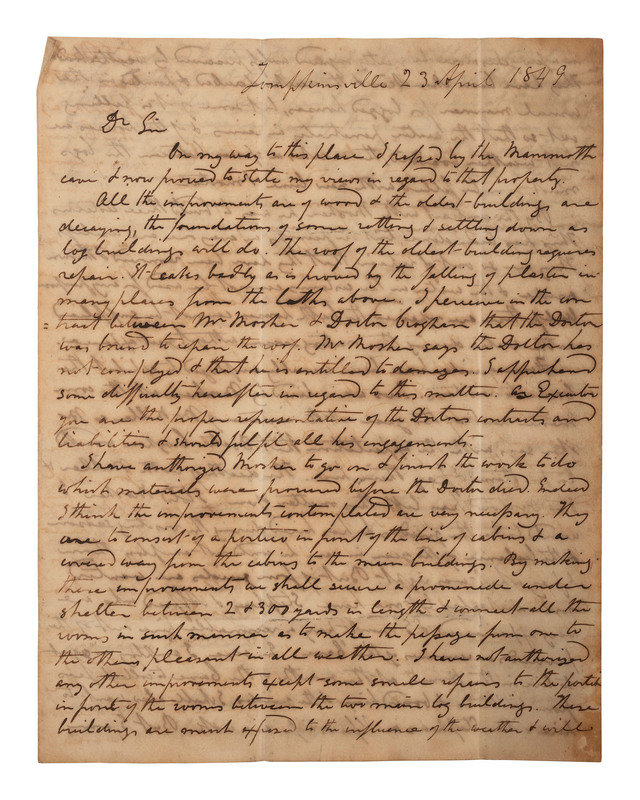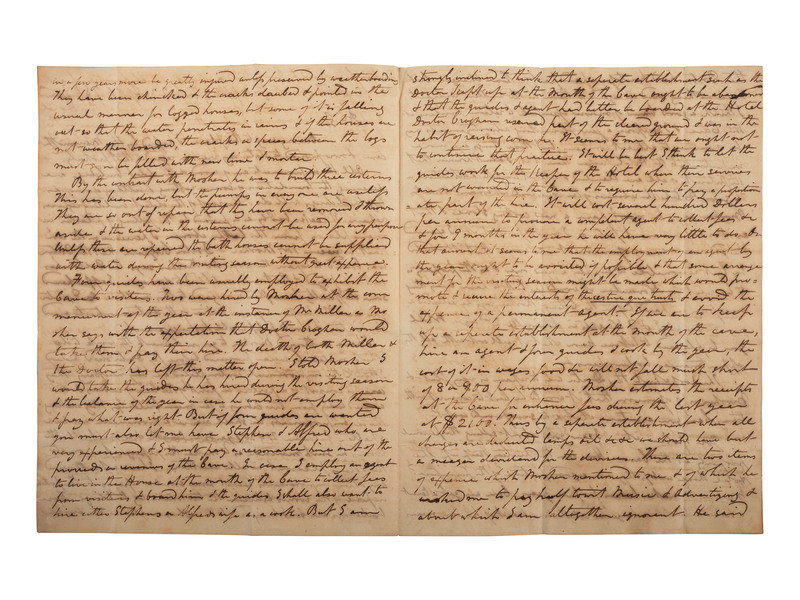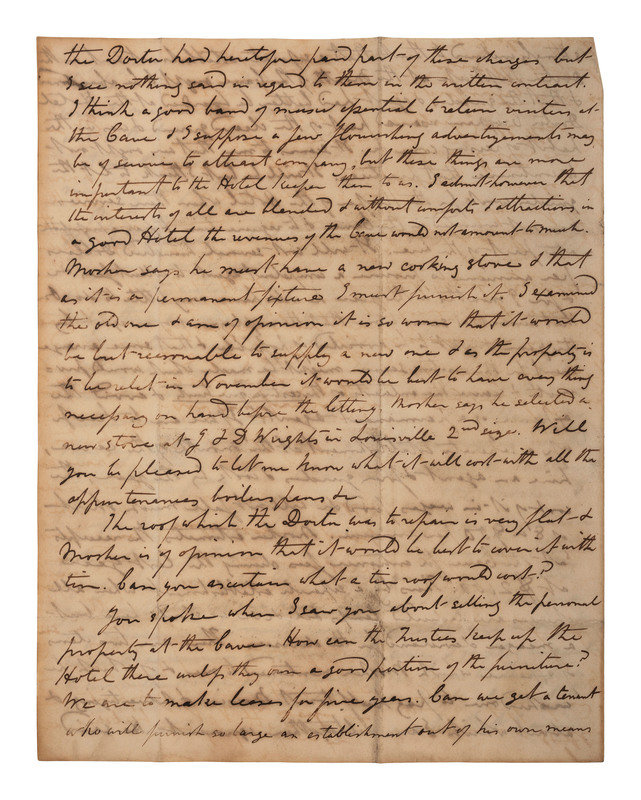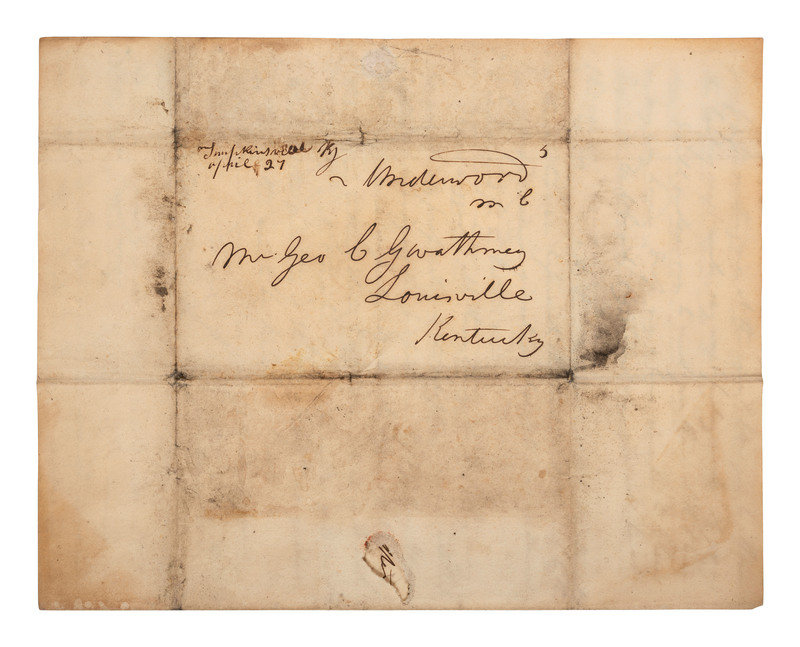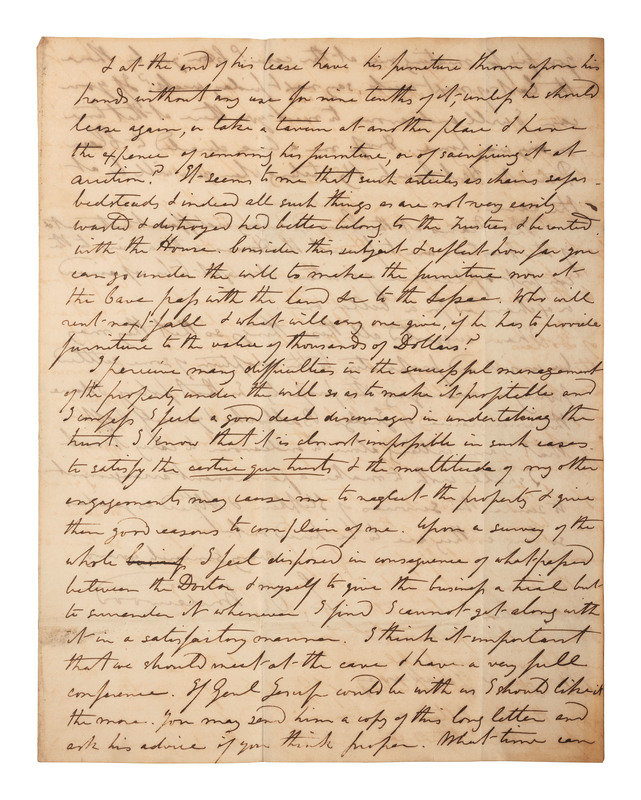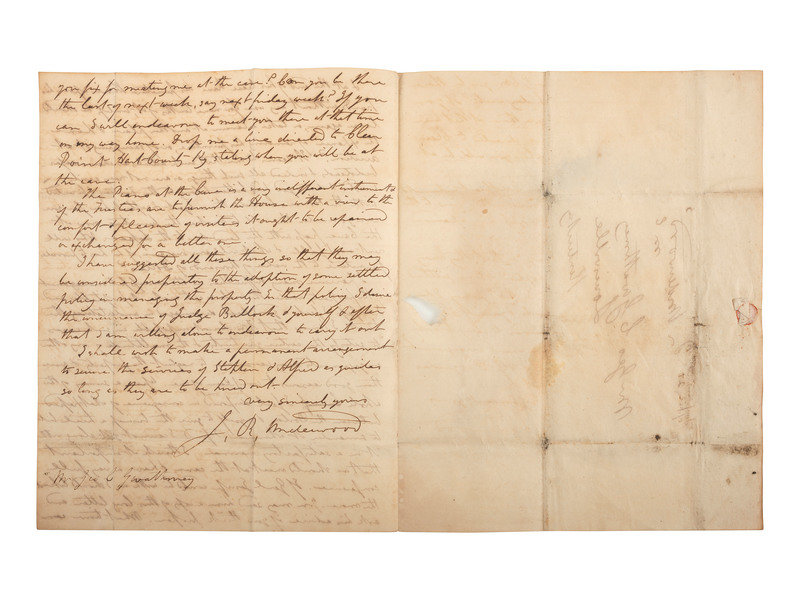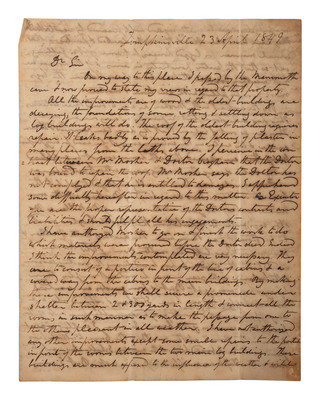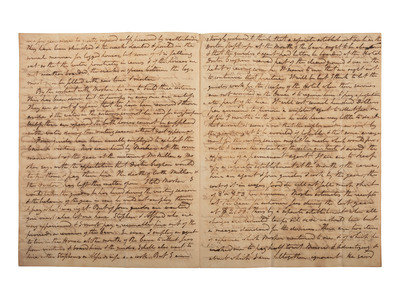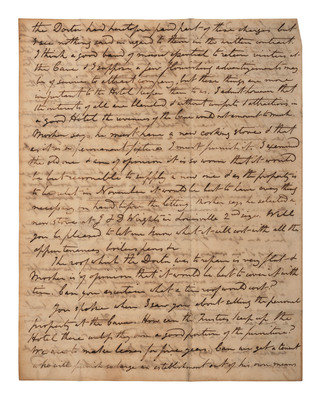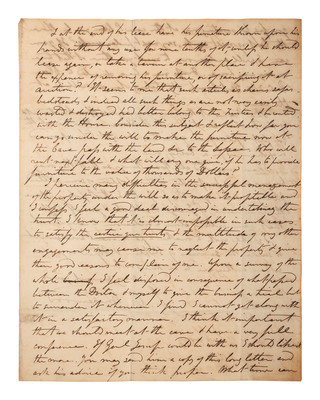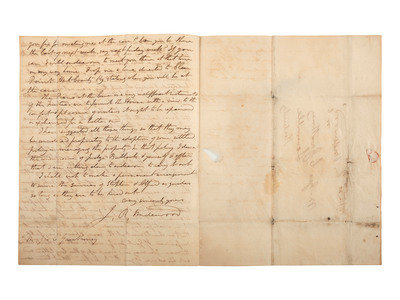[KENTUCKY - MAMMOTH CAVE]. UNDERWOOD, Joseph Rogers (1791-1876). Autograph letter signed ("J.R. Underwood") to George C. Gwathmey. Tompkinsville, KY, 23 April 1849. 6 pages, 8vo, toned, integral leaf.
Sale 960 - American Historical Ephemera & Photography
Nov 15, 2021
11:00AM ET
Live / Cincinnati
Own a similar item?
Estimate
$2,000 -
3,000
Price Realized
$5,938
Sold prices are inclusive of Buyer’s Premium
Lot Description
[KENTUCKY - MAMMOTH CAVE]. UNDERWOOD, Joseph Rogers (1791-1876). Autograph letter signed ("J.R. Underwood") to George C. Gwathmey. Tompkinsville, KY, 23 April 1849. 6 pages, 8vo, toned, integral leaf.
The large Kentucky caves were discovered by Euro-Americans at the end of the 18th century. A deed was filed by Valentine Simons in 1798, with the intent to produce saltpeter for the local market. He sold what would become known as Mammoth and Dixon Caves to John Flatt sometime after 1799. The caves changed hands many times until purchased by Charles Wilkins and Fleming Gatewood for commercial production of saltpeter. Gatewood’s interest was purchased by Hyman Gratz in 1812. When the demand for saltpeter bottomed out after the War of 1812, Gratz opened the cave as a tourist attraction in 1816. Franklin Gorin purchased the property in 1838 and brought a number of his enslaved persons to the area to work in the hotel that had been built near the cave entrance and to give tours.
The following year Gorin sold the estate, including the enslaved persons, to Louisville physician John Croghan (1790-1849), who set up a tuberculosis hospital deep inside the cave. Croghan died in 1849 (of tuberculosis), apparently the stimulus for this visit and subsequent letter. He willed the estate to his brother George and nine nieces and nephews. The will stipulated that the estate be held in trust for them until the last heir died (which happened in 1926). The trustees were Joseph Rogers Underwood (1791-1876), George Clark Gwathmey (1790-1850), and William Bullock (the two former seem to both have been relatives of George Rogers Clark). Even before the heirs were gone, many local folks tried to have the cave made a National Park, and once the heirs died, movement was made in that direction. It was finally ready for Park status (through acquisition of surrounding land) in July 1941, WWII began shortly after, and it was not officially dedicated until 1946.
One of the enslaved persons Gorin brought to the cave was Stephen Bishop. It has been said that he contributed more to the knowledge of the cave than any other single individual. He mapped, he explored, he tried to understand the geological processes of the cave.
The letter was written just after Croghan’s death. Even at this point it was in bad shape. “…The older buildings are decaying, the foundations of some rotting & settling down as log building will do. The roof of the oldest building requires repair. It leaks badly as is proved by the falling of plaster in many places from the laths above. I perceive in the contrast between Mr. Mosher & Doctor Croghan that the Doctor was bound to repair the roof…. I have authorized Mosher to go on & finish the work to do which materials were procured before the Doctor died. Indeed I think the improvements contemplated are very necessary. They are to consist of a portico in front of the line of cabins & a covered way from the cabins to the main buildings. By making these improvements we shall secure a promenade under shelter between 2 & 300 yards in length & connect all the rooms, in such manner as to make the passage from one to the others pleasant in all weather. I have not authorized any other improvements except some small repairs to the porch in front of the rooms between the two main log buildings.”
He goes on to comment on the operations of the attraction: “Four guides have been usually employed to exhibit the Cave to visitors. Two were hired by Mosher at the commencement of the year at the instance of Mr. Miller as the other says with the expectation that Doctor Croghan would take them & pay their hire. The death of both Miller & the Doctor has left this matter open…. But if four guides are wanted you must also let me have Stephen & Alfred who are very experienced & smart pay a reasonable hire out of the proved a revenues of the Cave. In case I employ an agent to live in the House at the mouth of the cave to collect fees from visitors & board him & the guides I shall also want to hire either Stephens or Alfreds wife as a cook….” This is certainly Stephen Bishop. A few sources note that Stephen had a helper who was also African-American, but no one seems to remember his name. Alfred is a good possibility.
Underwood brings up other issues, such as advertising, replacing the hotel piano for the entertainment of guests (“…but these things are more important to the Hotel Keeper than to us. I admit however that the interests of all are blended & without comforts & attractions in a good Hotel the revenues of the Cave would not amount to much.”), a new stove for the hotel, the cost of a tin roof, furnishing the hotel, and more.
“I think It important that we should meet at the cave & have a very full conference. What time can you fix for meeting me at the cave? Can you be there the last of next week, say next Friday week?” He also asks that Underwood contact Genl. [Thomas] Jesup (Croghan’s brother-in-law) and Judge Bullock.
This would set up the caves for National Park status later.
This would set up the caves for National Park status later.
Speed Family Collection
Condition Report
Auction Specialist
